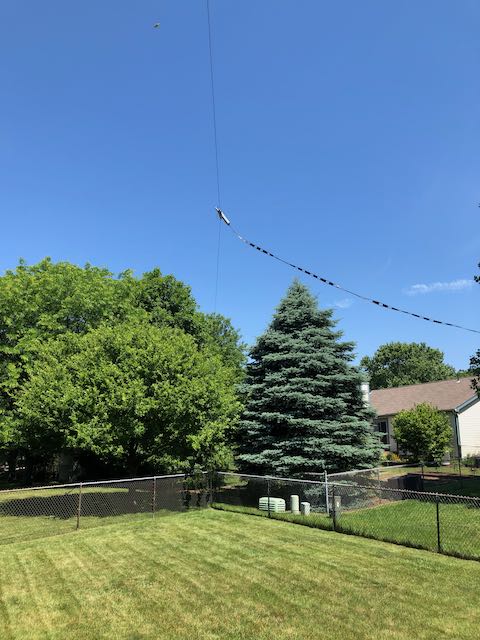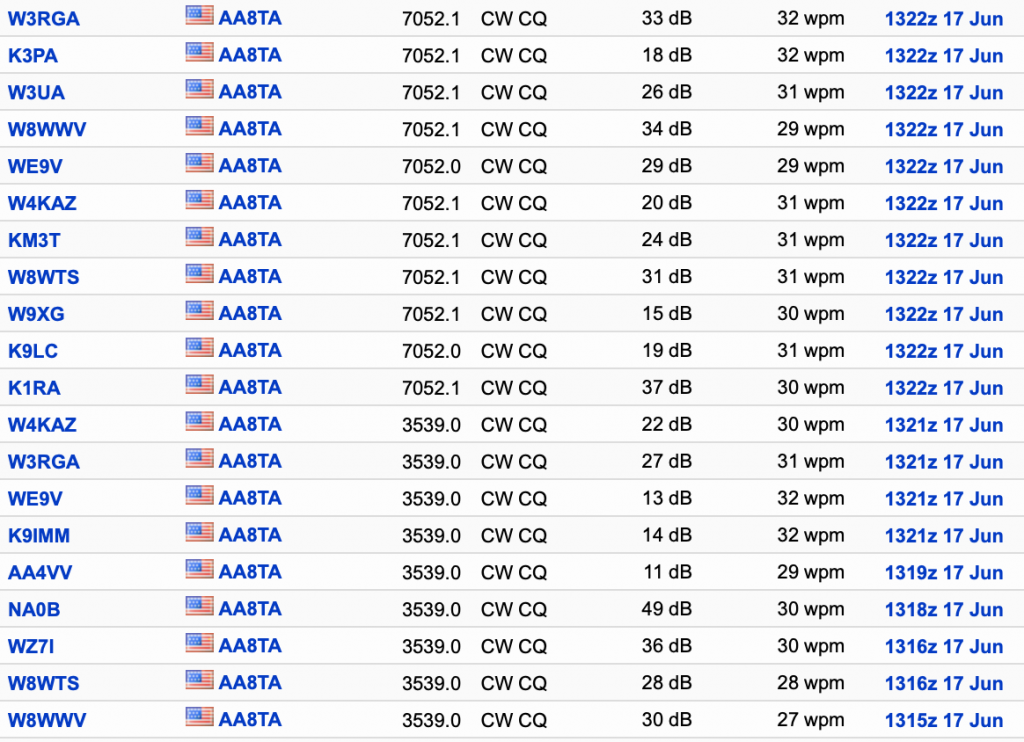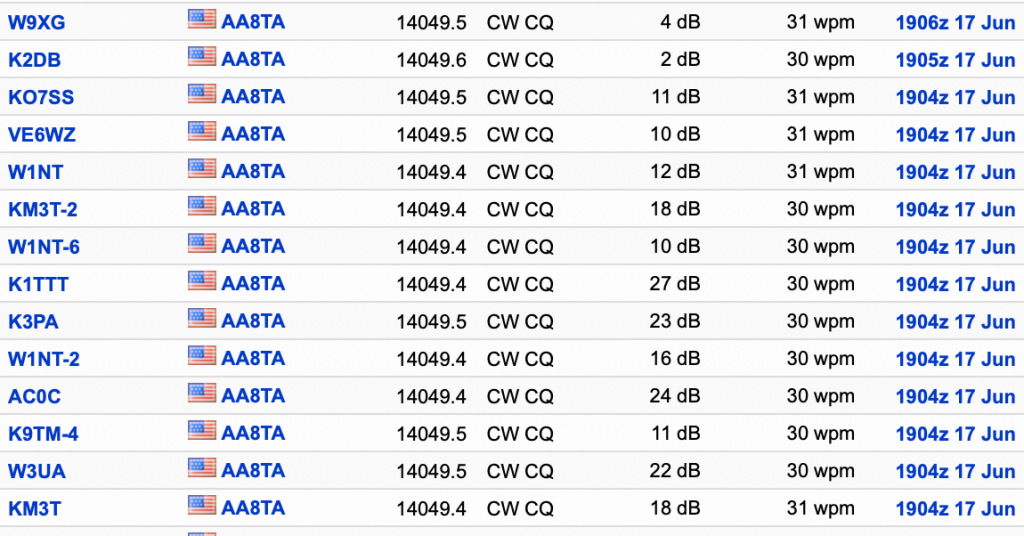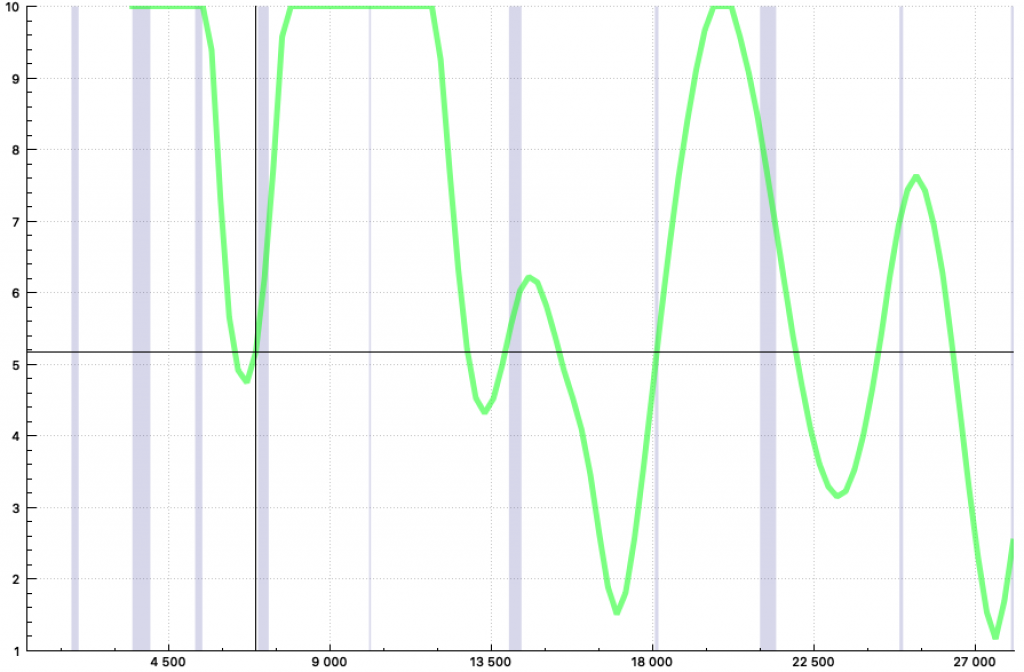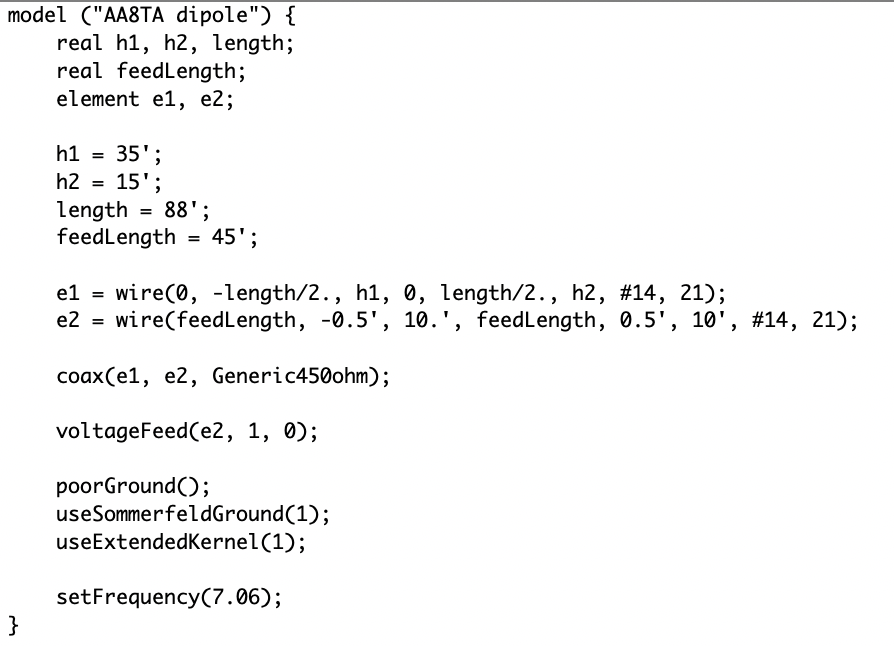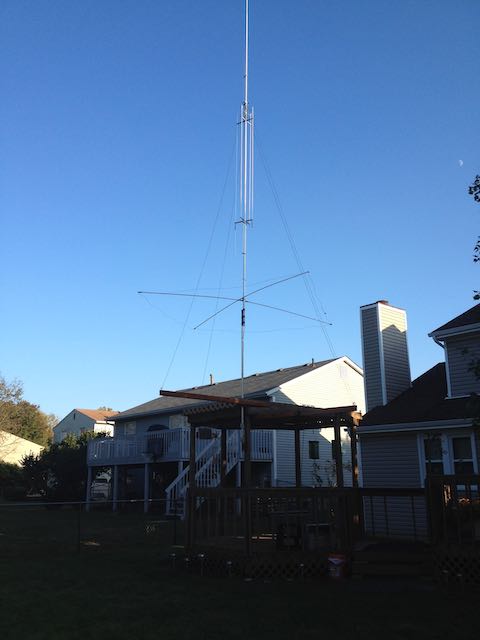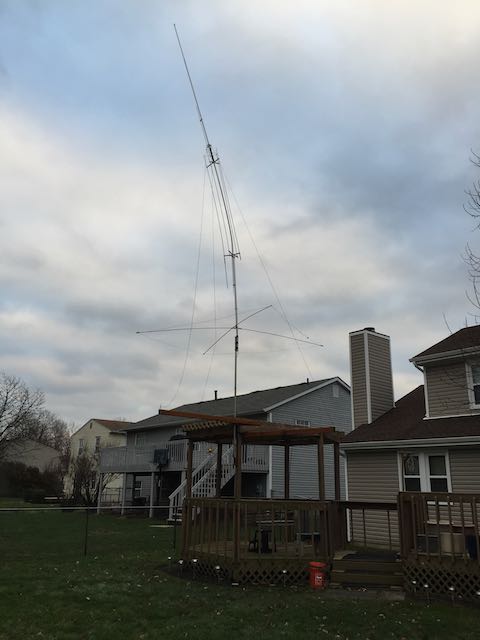(The following was written for my local club’s newsletter in the summer of 2016.)
The ARRL June VHF Contest was approaching so I decided to see if I could load my GAP Titan on 6 meters. It matched pretty well though probably not very efficiently. I managed to work 13 stations covering Texas, Florida, Louisiana, and Ohio, all on CW. Woo hoo! Only 46 states to go for 6 meter WAS.
Subsequent to that, I took the Titan down and re-tuned it from 75 meters to 80 meters. For the CQ July VHF Contest, the SWR on 6 meters was not very good, the transmitter folded back and the tuner was necessary. Only worked three stations, all in Ohio. I think propagation had more to do with those results than the antenna.
So I started thinking about a real 6-meter antenna. Given my cramped space, I thought a halo antenna might work. A halo is a half-wave dipole formed into a circular shape and fed with a gamma match. I found a QST construction article on a halo and tried it out. Mechanically, it was kind of flimsy and I could not get a decent match below 53 MHz. So that idea was scrapped and I found another article written by Carol Milazzo, KP4MD, and Version 2 was started.
This version uses 112 inches of ¼ inch soft copper tubing for the dipole, ½ inch PVC tubing for the support structure, an 18-inch piece of #10-gauge wire for the gamma match and a 200 pF, 1 kV ceramic disk capacitor to feed the matching rod.
This picture shows the initial construction. The halo is more ellipsoidal instead of circular. I should have done a test fitting before gluing the PVC parts together. Oh well, hope it isn’t too directional.

I temporarily attached the far ends of the dipole to the support structure using tie-wraps for tuning later on. Next we see the small plastic box that holds the SO-239 connector, the 200 pF capacitor and one end of the matching rod.

After putting it together, we end up with this. There is a shorting clip 12 inches out along the matching rod. For tuning purposes, the shorting rod is actually two alligator clips connected together which will subsequently be replaced with a piece of copper wire. Yea, it’s none too pretty but, then, neither am I.

Tuning consists of adjusting the gap between the far ends of the copper tubing for lowest SWR at the desired frequency then adjusting the position of the shorting bar and the value of the coupling capacitor to try to get to 1:1. Without an antenna analyzer, I had to rely on my rig’s SWR meter and my forward/reverse power meter. After about 30 trips in and out of the house, I got the SWR down to about 1.2:1 from 50.2 MHz to around 50.5 MHz. It’s under 1.5:1 from 50 MHz to over 51 MHz. Good enough for me. Before putting it up, I took a couple of inches out of the cross pieces to make the loop more circular.
Here we see the final product mounted on our gazebo.

So how does it work? Any time I putter around with antennas, I always make a few CQs on CW and see where I get picked up – and how well – by the Reverse Beacon Network (RBN). On this particular day, there were only two RBN monitors on-line, one in Germany and the other in Spain – rats! 6-meters was as dead as my grass before a recent bout of rain and no beacons were heard either. Did hear some strange signals which I wondered were some kind of birdies from something. Later on, I did hear a beacon from near Hamilton, Ohio, although it was weak. But, there was the ARRL September VHF Contest coming up.
In the September 6-meter contest, I made all of two – TWO! – contacts; both in Franklin County. I also found out that this thing doesn’t like rain – when it is wet, the SWR is dreadful.
Total cost: about $20 for the tubing, PVC, plastic box and other miscellaneous items. I ran about 60 feet of RG-8/U cable into the shack along with a bulkhead connector, a surge protector and a handful of connectors (seems I’m always out of PL-259s). The cable cost far more than the antenna.
Well, it’s no beam but I’m on 6 meters.
Update: Since I put up this halo, I have confirmed 21 states, including Colorado, South Dakota, Texas and some of the east coast area. I have also gotten as far as the Bahamas. Sometimes, the band opens up quite well and sometimes it is hard to get much further than about 30 miles.
The current wisdom is that the introduction of the FT digital modes has sucked the CW and SSB life out of 6 meters. I’m not very active on the Magic Band but there was a recent VHF contest where things were pretty good at times. I can only imagine what a higher antenna would do.



